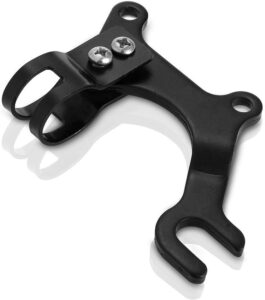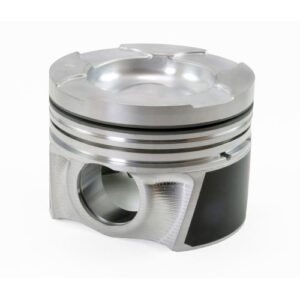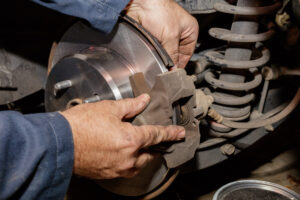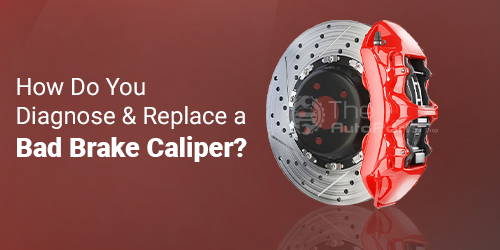The braking system, including the pads and rotors, helps to halt the vehicle. Apart from these significant components, there is one more component without which the car’s braking system is incomplete: the brake caliper. These crucial car components are found on every wheel when applied, the vehicle’s speed reduces.
Like other car parts, the brake caliper starts giving issues over time, and it’s time to determine the brake caliper replacement cost to fix the issues. Leaving them as it is can be dangerous for your life and lead to costly repairs in the future.
Components of a Brake Caliper
The brake caliper is an amalgamation of different components, including the adaptor, cylinder bore, piston, piston seal, and dust boot. Issues with any one of them must be identified and brake caliper price must be determined before getting the problem resolved.Let us have a look at each one of them:
Adapter

Commonly referred to as supporter or hanger and offered support to the caliper assembly. It is bolted with a steering knuckle and takes the entire brake load on its shoulders.
Calipers
It is that part of the brake caliper where the hydraulic pistons reside. It is generally made of materials including cast iron, Aluminium, and Magnesium. The material of the caliper is changed based on existing requirements.
Cylinder Bore
The piston of the cylinder moves inside the cylinder bore. The size of the bore depends on the number of pistons to be inserted within the cylinder.
Piston

The piston helps brake pads move towards brake pads or rotors. The piston size depends on the braking force applied to the car. The number of pistons depends on the kind of caliper used within the car. The braking force of one large piston is equivalent to the two small pistons.
Piston Boot
Piston boot, also known as piston ring, keeps the brake fluid behind the piston and the pads.
Dust Boot
A dust boot, also known as a brake boot, prevents the entry of contaminants within the cylinder bore.
Pins and Bushes
The caliper is basically mounted on pins and bushes. It helps the caliper move side to side.
Positioner
Between the pins and bushes lies the positioner. The positioner ensures that the caliper stays outside the moment it is released so that the brake or shoe drifts apart from the disc. In addition, it functions as a wear indicator for brake pads. Finally, it bends and closes the moment it starts deteriorating.
Retraction Spring
It is also known as an anti-rattle spring and performs the same function as return springs. The brake pad is aligned with the piston and caliper fingers using a retraction spring.
Diagnosing a Problematic Brake Caliper

Check the brake caliper for the following symptoms, which clearly indicates that it has gone bad. Determine the brake caliper replacement cost to help it perform optimally:
Clunking Sounds
Clunking sounds come out of the caliper as the caliper bracket holding the caliper brakes intact. This is because the brakes present on wheels lock up on their own. If you notice sounds while applying the brakes, buy your part and pay the labor cost to replace a brake caliper.
Squealing or Metallic Robbing Noise
As the brake calipers start sticking or freezing, sticking or grinding sounds come out of it. You can still hear the sounds even without applying the brakes; as the brake pedal is pressed, it starts producing sounds.
Vehicle Pulling on Either Side
Have you come across a situation when you apply the brake pedal, and the car moves to one side of the road? It is possibly due to problematic brake calipers. Sometimes with the accumulation of dirt, dust, and debris, the vehicle starts freezing up and the brake pads come in contact with disc brakes. The vehicle starts moving towards or away from the braking system. The car begins to shake while braking; possible reasons could be a defective caliper.
Leaks Taking Place in the Brake Fluid
The hydraulic pressure performs in an efficient way due to hydraulic oil. A weak or bad brake caliper often leads to hydraulic oil leakage. You would suspect brake fluid leakage on the ground or at the tires.
What Does Driving with a Bad Caliper Feels Like?
Brake pads wear out due to regular use or due to unfortunate circumstances. Some of the common examples include aggressive stopping or riding a brake pedal. A bad brake pad deteriorates promptly, ultimately leading to complete brake failure. In case the brake structure deteriorates completely, it starts sending the signal to you. Ignoring them would ultimately lead to bigger issues, and it’s time to determine the brake caliper price and take it to the mechanic for replacement:
Car Starts Trembling When the Brake is Applied
There are numerous reasons behind a trembling car. Excessively damaged or worn out car or rotors leads to vibrations in the car movements. Your steering starts vibrating the moment their speed is reduced, or try to stop it.
Worn Out Tires
If you don’t fix the problematic brake parts, it starts degrading your tires. You would suspect deceleration in your vehicle due to a bad brake caliper as the wheels and tires start to deteriorate quickly. You would end up slamming your brake pedal to halt the vehicle.
How to Replace a Bad Brake Caliper?
If you suspect issues with the brake caliper, try not to gamble with them without prior knowledge. It’s better to purchase the brake calipers by entering the vehicle’s make, year, and model, and a reliable store such as ‘The Auto Parts Shop’ would bring quality and affordable parts to you. You just need to pay the labor cost to replace the caliper.
The Bottom Line
Driving with a problematic brake caliper can be dangerous, and it’s time to determine the brake caliper price and take the car to the mechanic who will resolve the issues for you.
